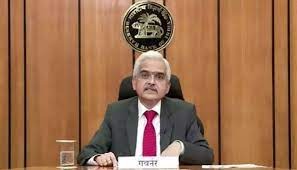Beginning on October 6, the RBI’s three-day policy meeting will have an impact on rates
In a significant turn of events, rate-sensitive industries like banking, autos, and real estate suffered significant losses in intraday trading on Wednesday, October 4th, defying general expectations that the Reserve Bank of India (RBI)’s Monetary Policy Committee (MPC) would maintain the current interest rates and policy stance.
This Friday, October 6, the conclusion of the three-day RBI MPC meeting, which started on Wednesday, is expected.
The Nifty Bank, Private Bank, PSU Bank, Auto, and Realty indexes all had falls on Wednesday during trading that were more than one percent, while the equity benchmark Nifty 50 also experienced a decrease of about one percent.
Investor mood is apprehensive in light of the results of the next RBI MPC meeting. Additionally, the stronger dollar and the rise in US Treasury rates have put extra negative pressure on market sentiment. Another aspect of the current market concern is the exodus of foreign money.
According to information from the National Securities Depository Limited (NSDL), foreign institutional investors (FIIs) sold Indian stocks totaling Rs. 14,768 crore and Rs. 2,868 crore so far in October.
RBI Prepared to Preserve the Status Quo
On October 6th, the central bank is expected to retain the status quo and its hawkish policy stance, according to the majority of experts.
In expressing their opinion, Barclays said: “We anticipate the MPC to maintain the repo rate at 6.5 percent during the October 6th meeting. The RBI will have little reason to alter the current policy framework.” They cited elements including declining core inflation, steady economic growth, and the possibility of supply-related price shocks, all of which provide little incentive for a change in policy.
This opinion was mirrored by Sabnavis, who said that “considering the RBI’s inflation forecast, it is likely to remain above 5 percent in Q3,” assuring that the status quo holds throughout the year and maybe into Q4.
Balancing Economic Growth and Inflation
The RBI’s principal goal is still to reduce inflation, but it also wants to avoid limiting India’s economic expansion.
Experts point out that domestic inflation spiked to 7.4% percent in July before dropping to 6.8% percent in August, and that by December, it is predicted to have fallen to approximately 5.5 percent. It does, however, continue to be comfortably over the 4% objective and is expected to stay there for many quarters.
Additional complexity are brought about by the changing trade dynamics, emerging global demand, altering commodity prices, pandemic recovery attempts, and geopolitical conflicts. The latter involves escalating economic fragmentation, rising inflation, worsening financial circumstances, and the Russia-Ukraine war. According to Infomerics Ratings, the financial sector is facing difficulties brought on by increased inflation, increasing interest rates, and pressures on the financial markets.







